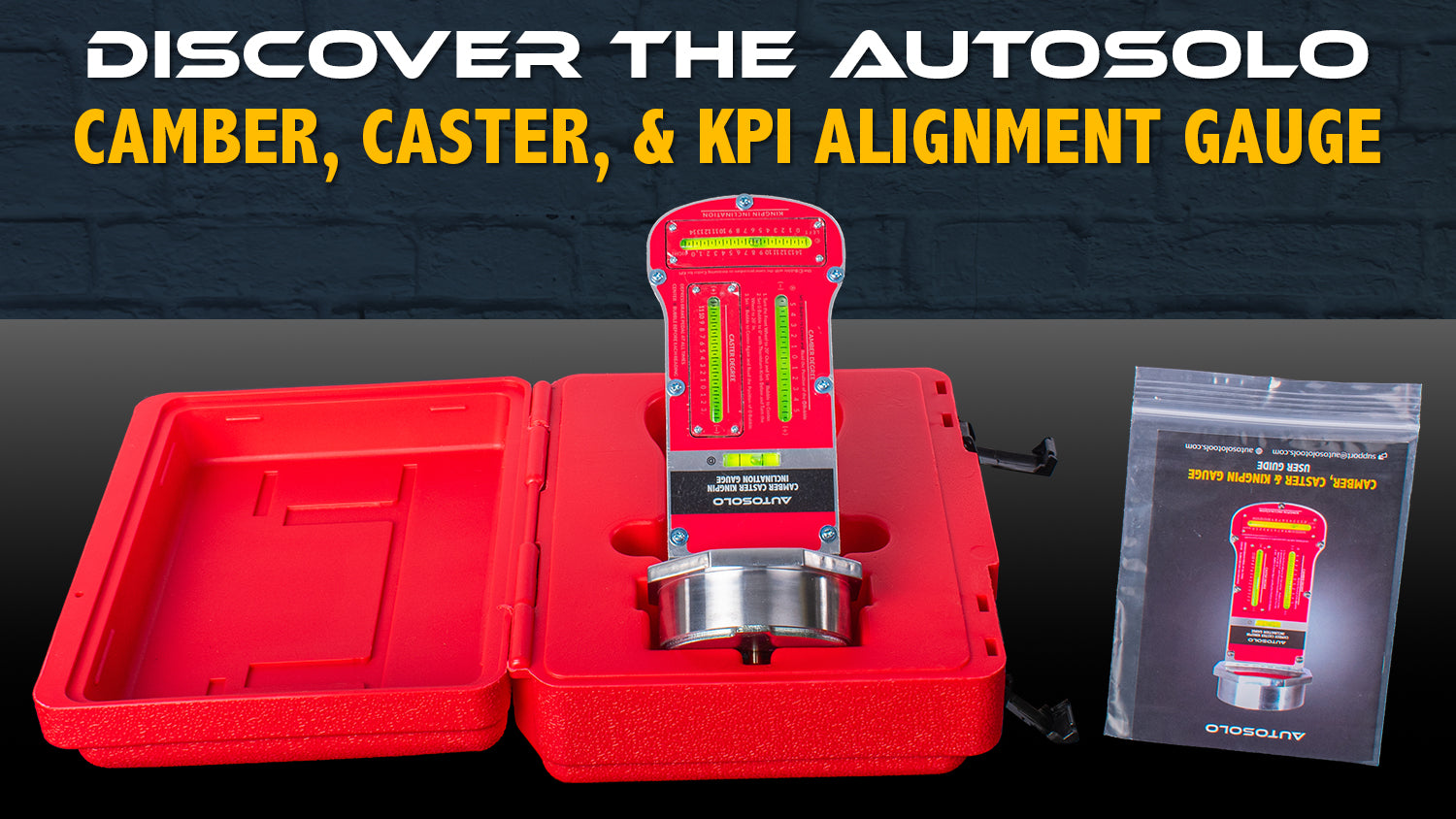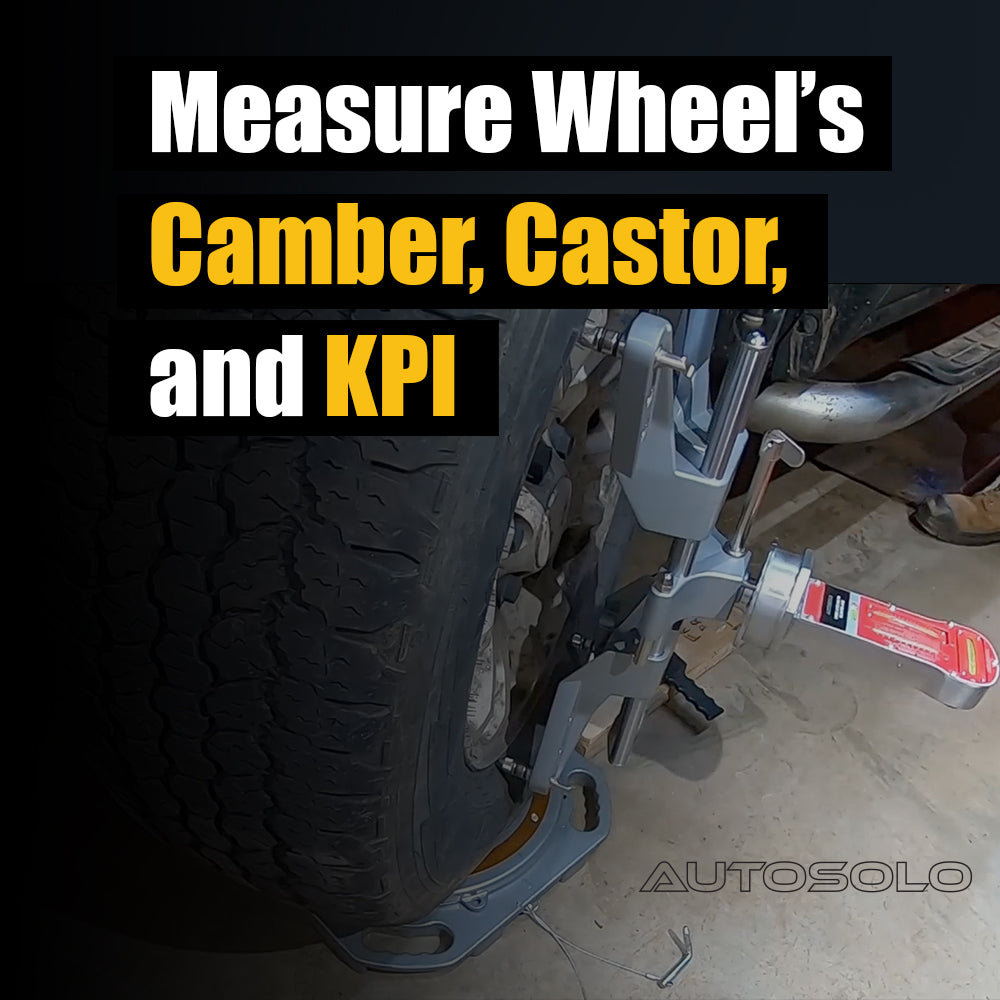After replacing all four tires on my old Japanese sedan, I drove my car straight into the concrete surfaced level garage floor which I checked with a six-foot-long level gauge. One area was lower so I shimmed under that wheel with thin vinyl tiles. With a half tank of gas and water jugs on the seat to simulate a driver, I rocked the suspension and checked that the vehicle was level with a spirit gauge, and then I took this new Zackman Scientific (AutoSolo) suspension-alignment gauge (Amazon ASIN B0CHQZFW4Y) out of the nice-looking well-designed red protective box it came in. At a measured 2 pounds in heft, I like that the aluminum Zackman Scientific AutoSolo alignment gauge feels solid in my hand and that it has clear readable bubble gauges with two adjustment knobs on the bottom.I began my measurements with this angle gauge starting with the front passenger wheel. After cleaning dirt from the hub, I carefully placed the magnetic base of the AutoSolo gauge onto the wheel hub. The magnet mount snapped on securely, holding firm. The bubble level on the gauge was my first guide. I gently rocked the car a little to settle the suspension, then watched the bubble. It centered almost perfectly.Now for camber (which is, I feel, the gauge's primary function). The main level on the AutoSolo gauge showed me the camber angle directly. I knelt down, eye-level with the dial, and noted the reading. It was slightly negative, maybe -0.5 degrees. Not terrible for my Japanese sedan of its age, but I jotted it down in my notebook. The instructions with the gauge were pretty clear how to use it and how to doublecheck against the manufacturer's specs.Then came caster. This was where the gauge's kingpin inclination feature came into play. I unlocked the steering wheel and, with the car on my level plates, I turned the steering wheel to the right, full lock. The instructions with the AutoSolo gauge specified 20 degrees in one direction, then 20 in the other. Since my steering wheel wasn't marked, I just turned it all the way to the right and held it there. I took another reading on the gauge. Then, I turned the wheel full lock to the left and took a third reading. The difference between those two readings, along with the initial straight-ahead camber reading, helped me calculate the caster. It took a bit of mental math and referring to the gauge's instructions, but it was doable. It wasn't as direct as camber, but having that kingpin feature made it possible.After that, kingpin inclination itself. The AutoSolo gauge's ability to measure the non-adjustable kingpin angle (also known as the steering axis inclination angle) was a bonus. By noting the camber reading at full lock right and full lock left, and comparing it to the straight-ahead camber, the math from the gauge’s instructions allowed me to get a good estimate. It wasn't something I expected to adjust, but it was a great diagnostic to ensure nothing was bent.Lastly I measured toe-in using the toe plates you see in my attached photos, but the AutoSolo gauges doesn't help with toe because the AutoSolo gauge shows angles of tilt wherease to is distances between wheels on an axle.Once I had all my numbers, I went to work making small adjustments, re-checking with the AutoSolo gauge for camber, and the tape measure for toe, until everything was within spec.Overall, considering what an alignment costs, this alignment gauge is great value for the money. That hefty two-pound magnetic AutoSolo alignment angle gauge was surprisingly easy to read even small angles and as a result, it made checking camber a breeze. By the time I was done, I felt a real sense of accomplishment because this AutoSolo alignment gauge gave me the power to check suspension like I never was able to do before.In summary I ordered this $110 Zackman Scientific (AutoSolo) suspension-alignment gauge to be able to make measurement checks at home. As you may know, caster, camber & toe (in that order) are the three most important alignment checks to make on your vehicle (along with the non-adjustable kingpin inclination angle). This AutoSolo magnetic alignment-checking gauge allows you to measure all of the above, except toe.












